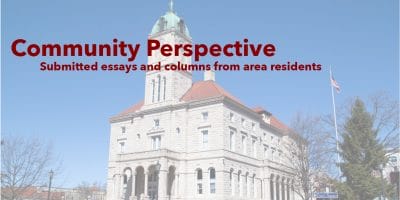
Article and videos by Nzar Sharif, contributor
With countries banning mass gatherings and governments and health organizations are urging people to practice social distance to stop the spread of COVID-19, people are having to get creative to make contact with each other and unite amid being quarantined.
After Virginia’s governor declared a state of emergency, one Harrisonburg resident started Dancing Resilience as a virtual dancing community to do just that.
The aim of building this online community is to make people feel connected, but in another form, said Katie Mansfield, Dancing Resilience’s founder.
“It felt important to honor the need to stay home/stay out of circulation to protect the most vulnerable bodies and to honor the need to connect with each other and celebrate love and hope. I had just come from facilitating a STAR (Strategies for Trauma Awareness and Resilience) training in Washington D.C,” Mansfield said. “The tension and anxiety were so high, and my co-facilitator and I realized how much fear was gripping people, not just the people we were with, but many people all over the world. She and I worked hard to interrupt the sinking into fear and to amplify the vibration of love.”
Mansfield, who works for Eastern Mennonite University’s Center for Justice and Peacebuilding as a lead trainer for its Strategies for Trauma Awareness and Resilience program, is working to finish her PhD in expressive arts and conflict transformation. Her specific focus is on “Re-friending the Body,” which explores how “arts-based, embodied learning is critical for us to transform the violent patterns, historical harms, disconnection and mechanization that define so many social experiences these days,” she said.

Mansfield started building the online community among her close friends, but once word spread, it became a global virtual dancing community where people joined the community from different states and other parts of the worlds. Mansfield dances five times a day for 20 minutes at a time, and others join in.
Right now, “Dancing Resilience” is a private Facebook group that’s spread by invitation, so Mansfield said if people are friends of hers, or friends of her friends, they can request to join the group, which “seems to work” for now.
The inspiration for it also came from social media.
“I read a Facebook post from my friend in Florence, Italy. Along with her challenges, she shared the creative initiative by Italians in many locations to sing out their windows at a certain time of day to diminish isolation during mandated social distancing. It made me wonder what I and my friends could do, and for me the natural answer was dancing,” Mansfield told The Citizen.
Soon after, the private Facebook group which she called “Dancing Resilience” started, and within a few days, 228 members had joined.
“Most of the participants are friends of mine, with whom I have danced before, in person. So, we have a great embodied memory of sharing space and movement and love,” Mansfield said. “Some of the participants are friends of friends, who just want to connect and move. It’s been awesome to reconnect with some friends I haven’t seen or talked to in weeks or months or years.”
A global reach for Dancing Resilience
So far Dancing Resilience has participants from 17 states and six other countries, including Canada, Kenya, Mexico, Trinidad and Tobago and the UK. Ages so far range from 2 to people in their 50s.
Christine Cole, who is from Trinidad and Tobago, said she found joy and happiness when she was able to connect again with Mansfield and many other friends whom she met in Harrisonburg when she attended a Summer Peacebuilding Workshop at Eastern Mennonite University.
Carol Subino Sullivan from Atlanta is another participant who dances frequently. She said she hopes that the love, beauty and movement Mansfield has generated reverberates and inspires similar communities to spring up.
“This is a great way to cut through the isolation to bring community, joy, movement and hope in a dark time–in a way that still keeps us from spreading the virus,” Sullivan said. “With creativity, caring, resolve and technology, we can flatten the curve and protect our human community.”
Sullivan’s daughter, who is now almost 2 years old, received a liver transplant last year that saved her life. But the medicine her daughter must take affects her immune system, so reducing social contact is important.
“I cannot take any chances, so I’m practicing strict social distancing,” she said. “I had let all of my dance communities know that I would no longer be attending in person. I told friends I wouldn’t be able to gather with them for occasions we had planned. Though my resolve was firm, I still felt sad — dance, friendships all of these nourish my soul and help me to bring my best self into the world. Katie’s invitation to join the virtual dance community met me at that place of sadness and created a path for our souls still to connect and be filled.”
Paulette Moore joined from Six Nations of the Grand River Territory near Toronto, Canada. She focused on the importance of dance and body movement especially in the time of uncertainty.
“We need to remember that our own energies create our worlds and dancing transforms both our personal and collective energies,” Moore said. “People have become so data-driven, technologically-dependent and social media-focused that I believe many have forgotten we have bodies — and our bodies are the key to not just how we survive — but how we thrive.”
Songs that match the mood
Mansfield said the music arrangement typically starts with something slow to allow people to arrive and stretch. Then, “it moves into something that evokes the water element, praying for water, and feeling our own fluidity,” she said.
There is not a specific dancing style. Dances could have different movement and rhythms each times.
“People are invited to move however they please,” Mansfield said. “Some people don’t look at the screen much, just dancing in their own space to the music provided. Others get pretty interactive with other dancers by coming closer to the camera and engaging intentionally. Sometimes I invite individuals to lead us one at a time. Some people who’ve joined are deeply skilled and trained dancers, while others of us just like to move our bodies to music. Some of us don’t move much at all.”
Before the playlist ends, participants will dance to a song or two “that are connective, celebratory, and/or power-honoring,” she added.
“Sometimes I’ll put in songs that acknowledge the difficulty of isolation, the vulnerability of our humanity, as well as songs that emphasize possibilities, hope, and strength,” Mansfield said.
But one constant is that the playlist always finishes with the song “Resilient” by Rising Appalachia.
Not only is Dancing Resilience connecting people and freeing them from isolation across the globe, but it’s also an outlet for others in Harrisonburg, where the universities, schools and other businesses have closed.
Donna Schminkey, an assistant professor of nursing at JMU, is a participant from Harrisonburg, who is self-isolating because of risk factors in her household.
“The opportunity to reach out and be a part of a ritual that happens at more or less set times a day, to check-in with other people and see that we are not alone in the world, and to share music and movement with each other — this is the holiest thing I can think of doing right now,” she said.
Breaking the isolation — virtually
Just as important, she said dancing with others — even virtually — makes her and her family feel less lonely, less isolated.
“These days are full of opportunities for us to show each other the best of our shared and individual humanity,” Schminkey said. “That is what Katie has created for us. It is beautiful, and it is something that in our former life routines, there ‘wasn’t time for,’ but now, we can be present for each other and attend to the sacred together, multiple times a day.”
It’s also offered a welcome break from her work in trying to shift her classwork online to help her senior nursing students through their last weeks of college “so they can join the ranks of healthcare professionals who are on the frontlines of this pandemic.”
“There is an urgency to my work, and it involves spending hours at the computer typing and talking,” she said. “To stand up and move and immerse myself in journey dancing is a great gift.
And for my daughter, the dancing resilience provides structure, and connection to the outer world, as well as a chance to move, even on rainy days. It is beautiful that we can both be meeting new friends and their pets in this virtual community.”
Journalism is changing, and that’s why The Citizen is here. We’re independent. We’re local. We pay our contributors, and the money you give goes directly to the reporting. No overhead. No printing costs. Just facts, stories and context. Thanks for your support.













